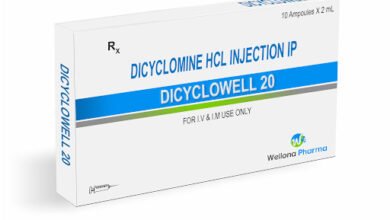Health Insurance 101: How to Choose Health Insurance When You Have Endometriosis

If you’re one of the 6.5 million women in the United States living with endometriosis, you know how disruptive the chronic condition can be. Getting a diagnosis can take years —
ranging from four to 11 years, on average. Finding the right treatment can be frustrating.
Diagnosing and treating endometriosis isn’t just a pain (literally and figuratively); it can also be expensive. All those doctor visits, treatments and procedures can add up, even if you have health insurance.
If you have endometriosis, or suspect you might, consider these nine questions before you choose a plan. Make sure you get the best possible health insurance to minimize your costs — and your headaches.
1. Is the healthcare plan compliant with the Affordable Care Act?
The Affordable Care Act (ACA), sometimes called Obamacare, set rules for health insurers, including requiring coverage for contraceptives and not charging women higher premiums than men. If you buy health insurance on Healthcare.gov (the federal Health Insurance Marketplace) or your state’s marketplace, the options will include these protections. But if you buy insurance another way, you might not be protected. Those plans may not cover everything you think they do and they can deny coverage for preexisting conditions, which a prior endometriosis diagnosis would be.
2. Which healthcare providers (HCPs) do you see?
Do you have a trusted primary care provider or specialist? Do you go to a specific clinic or hospital for care? If you have endometriosis specialists you’re happy with, make sure they’re in-network with any health insurance plan you’re considering. Being in-network means that those HCPs are contracted by the health plan to treat the plan’s members.
3. Does the provider network of the health plan you’re considering include a range of endometriosis specialists?
Not every HCP is an expert in diagnosing or treating endometriosis. For example, only some specialists perform laparoscopic surgery to treat endometriosis. Even if HCPs you’re happy with are in the health plan’s network, see who else is available in case you need a different treatment approach.
4. How much flexibility would you have if you needed a new HCP?
Check the plan’s policy if you need or want to see an HCP or visit a facility that’s considered out of network, or not participating in the plan. You may want to switch HCPs or try new specialists if you’re not getting what you need from the ones you’re seeing now. If those HCPs are not in your health plan’s network, you may be able to get some reimbursement or coverage to see them. But on some health plans, especially health maintenance organizations (HMOs), you may not get any help paying for HCPs outside of the plan’s network. Unless you’re completely happy with the care you’re getting, consider ensuring that you have some flexibility to see out-of-network specialists if necessary.
5. Are the common endometriosis treatments covered, and how much will you have to pay for them?
Most endometriosis treatment starts with over-the-counter painkillers, which you probably have to buy yourself. Next, your HCP may put you on hormonal birth control or progestin alone. These medications are most likely covered, thanks to Affordable Care Act rules that require contraceptives to be covered. But depending on the extent of your endometriosis and what you’ve already tried, those treatments may not be enough. Make sure your health plan will cover long-term hormone therapy, hormonal IUDs, therapies for pain management, surgery (including laparoscopic procedures to remove endometrial implants or procedures to cut pelvic nerves to reduce pain), and procedures to remove your ovaries (oophorectomy) or your uterus (hysterectomy), if necessary.
Learn the definitions of common health insurance terms
When reviewing the coverage for these treatments, look at which providers are covered and how much your costs would be in copayments or coinsurance. For medications, some health plans require you to try step therapy, meaning you may have to try less expensive medications before the plan will pay for more expensive ones, and only if the less expensive drugs don’t work.
6. What’s the policy on covering new treatments as they become available?
Women who live with endometriosis often long for relief. If new treatments come to market, will your health plan cover it?
It’s impossible to know for sure if a new treatment that isn’t available now would be covered. But ask about the plan’s policy for reviewing and approving coverage for new treatments. You can also check health plan ratings to see how others rate the health plans on things like how easy it is to get the care you need.
7. What’s the deductible?
Deductibles — healthcare costs you pay before your health insurance plan starts to pay — have become commonplace. That means the chances are good that you’ll have to pay for services you use before insurance starts picking up its share. If you’re likely to use a lot of services, such as procedures to remove endometrial tissue (which people sometimes need more than once), you’ll be stuck paying out of pocket until you meet your deductible. Make sure you have the funds to cover the amount of your deductible. You may have to pay more in monthly premiums to get a lower deductible, but depending on how many services you use, it may be worth it.
8. How much is coinsurance?
Coinsurance is one of the least-understood health plan costs. What you don’t understand can take a bite out of your budget. Coinsurance is the percentage of medical bills you have to pay after you’ve met your deductible. For example, if your endo pain sends you to the emergency room and the bill is $10,000, with 20% coinsurance, you’ll have to pay $2,000. Understand that percentage so you can prepare for those potential expenses.
9. What’s the out-of-pocket maximum?
For covered services, health plans can only make you pay so much in a year out of your own pocket. That limit is called the out-of-pocket maximum. If you buy your health insurance on the Health Insurance Marketplace (Healthcare.gov), those limits are set by the government. In 2023, the out-of-pocket max in Marketplace plans can’t be higher than $9,100 for an individual and $18,200 for a family. That doesn’t mean every plan will have that high a limit; it’s just the maximum cap they can use. Check the caps on plans you’re comparing — this is the total amount you could have to pay in a year in deductible payments, copayments and coinsurance (premiums don’t count toward the out-of-pocket maximum).
From Your Site Articles
Related Articles Around the Web
Source link
#Health #Insurance #Choose #Health #Insurance #Endometriosis



